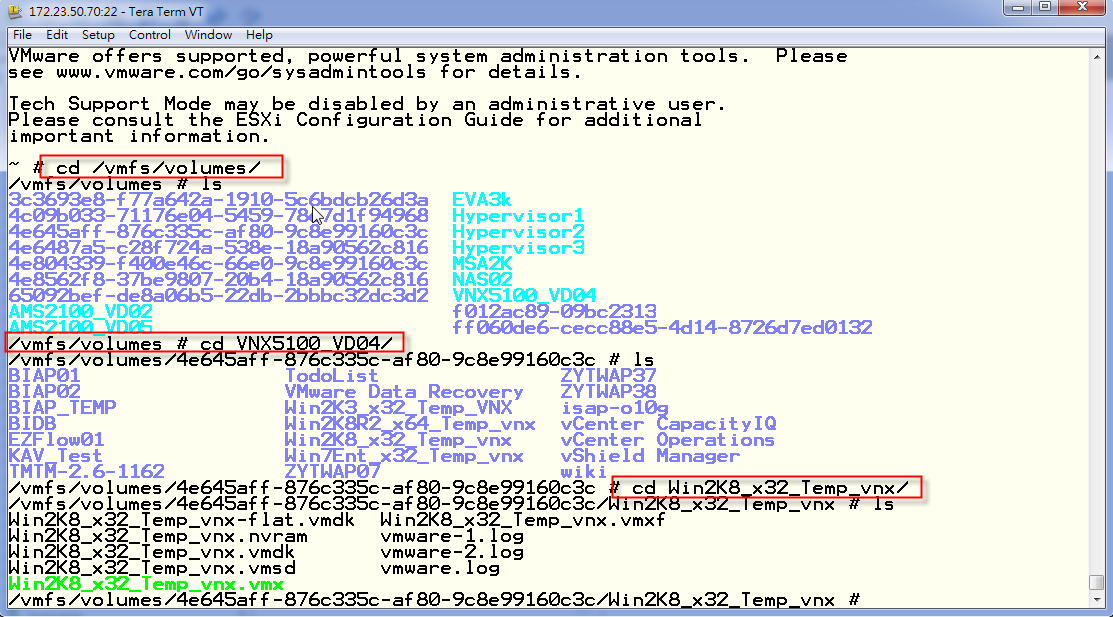
Vmkfstools Windows 7
Unfortunately, 64-bit Windows will restrict the ability to load 32-bit drivers, which is why the VMDK mounting utility is failing. I found that purports to be able to work around the problem by simply installing it in the Program Files directory instead of Program Files (x86), but it did not work for me; perhaps you will have better luck. You could also look for a third-party tool like, but alas, they too need to use a driver, which gets blocked—yes, even when installing/running as administrator (the for VDK is available, so someone may take up the task of updating and compiling it for 64-bits). Actually has a 64-bit version, but unfortunately it only supports read-only for VMWare disks. There are on the VMW boards about this and it seems that the just doesn't support 64-bit Windows and that a newer one is included as part of the developer tools (as though only devs would need such a utility). So your options are to use the vmware-mount utility from either the or the newer which contain a more recent copy of the mounting and disk management utilities. (Even these install as 32-bit by default and include a zip file with 64-bit versions of a few of the files including the disk management utility, but not the mounting utility.) You can mount a VMDK file with this, but note that it mounts as read-only by default; for write capability, you must use the /m:w switch, and even then, Windows keeps giving a path not found error when trying to change/delete files on the mounted volume.
Use Vmkfstools to copy the virtual disk files from the datastore on the source. Vmkfstools -i /vmfs/volumes/ original_datastore /win7-vm/ virt_disk_file.vmdk.
VMWarePlayer has a built-in mounting ability via the hard-drive settings, but again, even setting it to not—read-only gives errors about being unable to find the file. (VMWare Workstation also does this, but VMWare Player is much smaller and free.) Update: I just discovered that you can make changes to drive mounted with vmware-mount (from the VDDK), if you do it from an admin command-prompt (e.g., e: & del /f /q pagefile.sys). However, when doing it this way, it does not even appear in Windows Explorer.
You can try experimenting with different combinations of permissions and user privileges to find one that works best. You ideally use the official command-line-utility vmware-mount.exe • To get it, you have to (you need a valid email-address) and download the free 40 MB sized (vSphere VDDK V5.1.0-774844).
Attention: Later versions like do NOT include the vmware-mount-utility anymore! • After a standard-installation, you will find vmware-mount.exe at the following path: C: Program Files (x86) VMware VMware Virtual Disk Development Kit bin Don't worry about 32 or 64 bit, because it simply works without any problems, and that´s what counts in this case • Open a standard-command window there and mount your.vmdk-file with one of the. Vmware-mount [driveletter:] [path-to-vmdk] [options] If you don't use the /m:[w n] switch, everything works perfect. You see your specified drive-letter in the windows-explorer, and you have full read-write access to the virtual disk.
Hint: Put your mount/dismount procedure in batch-files for corrections, future and ease of use. • Beware: Although there's a related,, I don't recommend to use the VMWare Disk Mount Utility 5.5, because it´s really old compared to the one here: vs.! Rosetta stone ultimate language disk v2 full iso psp.

Before you begin • Make sure you have: • Your Windows product key (xxxxx-xxxxx-xxxxx-xxxxx-xxxxx). • An internet connection (internet service provider fees may apply). • Sufficient data storage available on a computer, USB or external drive for the download.
• A blank USB or DVD (and DVD burner) with at least 4 GB of space if you want to create media. We recommend using a blank USB or blank DVD, because any content on it will be deleted. • For Enterprise editions please visit the.
Gurps 4th edition characters pdf. Follow these steps to download Windows 7 • This product requires a valid product activation key for download. Enter the 25 character product key that came with your product purchase in the field below. Your product key is located inside the box that the Windows DVD came in, on the DVD or in a confirmation e-mail that shows you purchased Windows. • After the product key is verified, select a product language from the menu. • Select either 32-bit or 64-bit version to download.